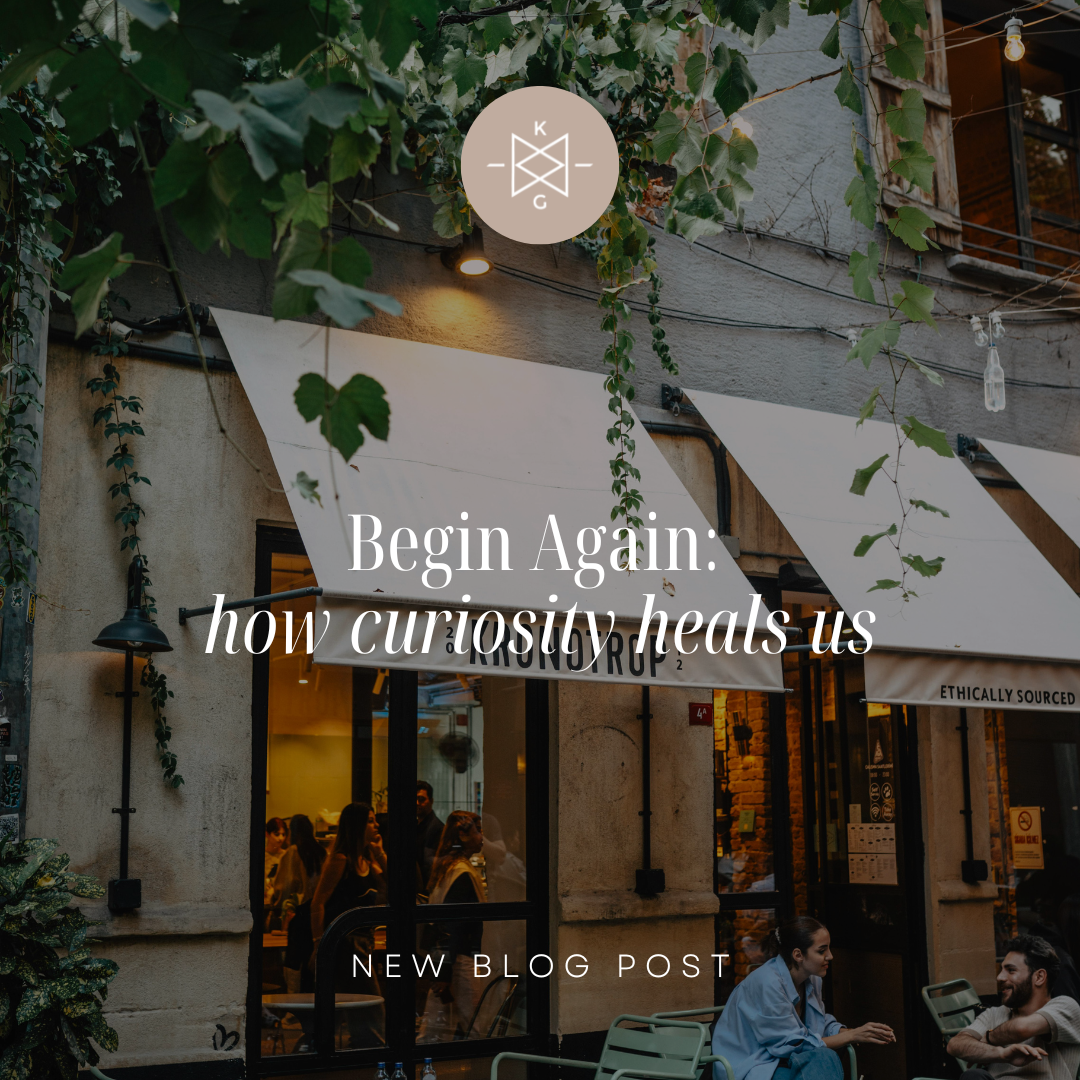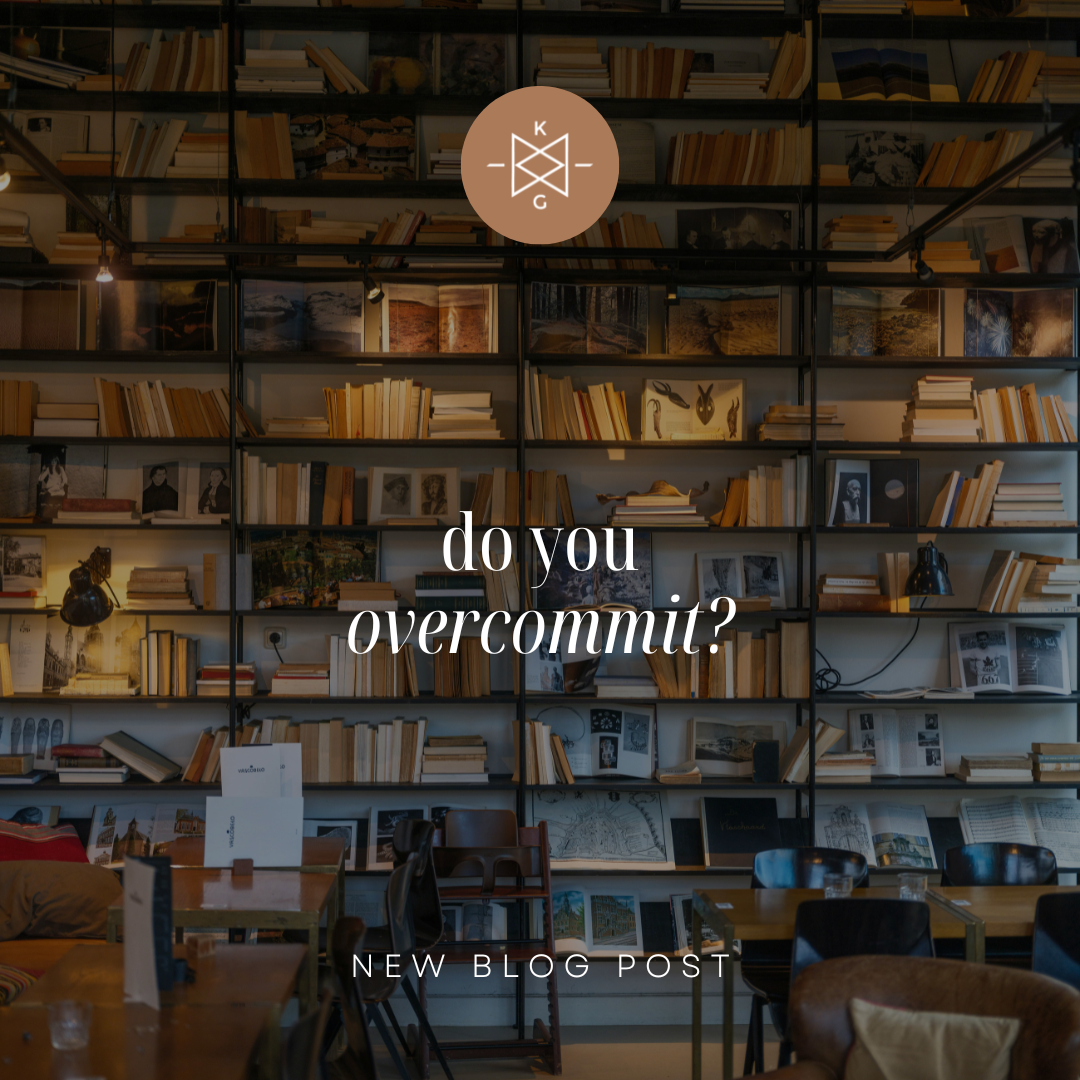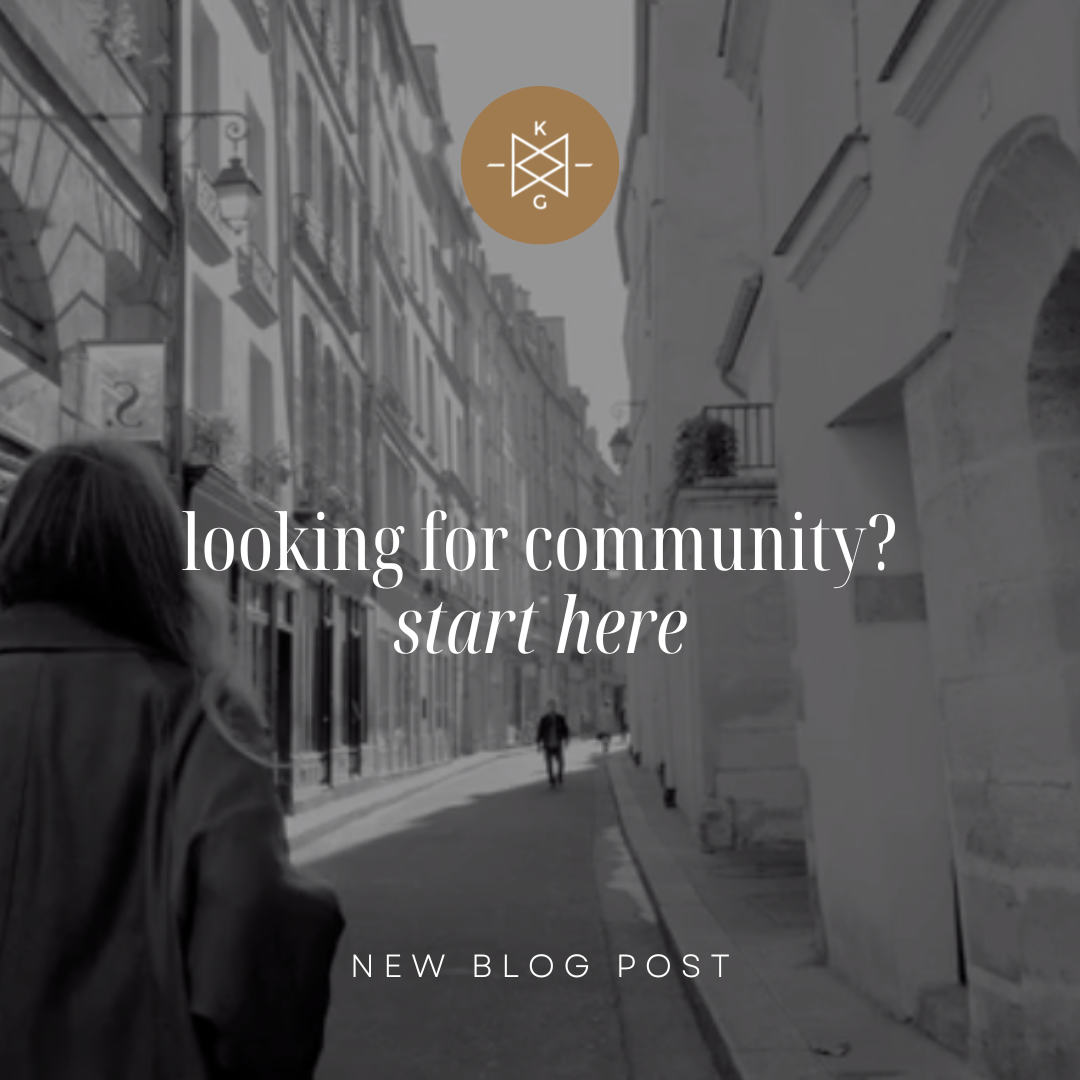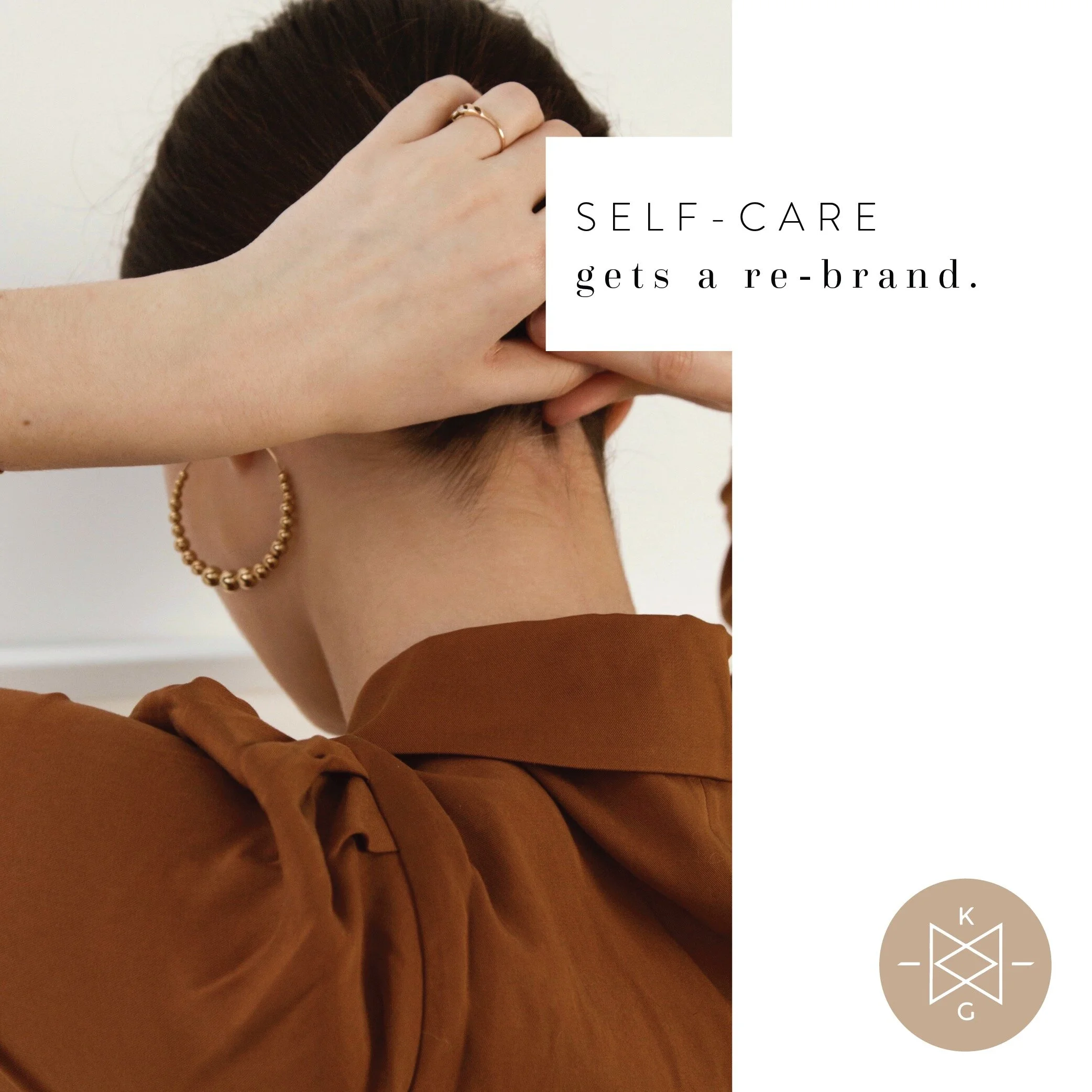
The Blog
Recently Featured
All Blogs
Self-Care Gets a Rebrand
“The most common form of despair is not being who you are.”
- Soren Kierkegaard
One of the first questions I like to ask clients I work with takes some by surprise. It helps me steer our entire therapeutic journey. It’s simple…and very complex.
Tell me about your relationship with you?
Typically, after a long stare back at me like I have eight heads, they respond,
“Um…good question. I don’t think about it much.”
Exactly. How we relate to ourselves doesn’t exactly stay top of mind. Others, more likely.
Yet how I relate to myself—how I treat, take care of, and talk to myself directly impacts everything else in life. Everything.
Why? Because I can’t live and give out of an empty vessel.
Last February, (which seems like 12 years ago right now), I hosted a Self-Care Workshop alongside two dear friends. It was powerful because we realized how desperate our souls, especially as women, are for deep, true self-care.
I’m not talking mani-pedis and facials and wine nights with the girls. Those are all fabulous and can be nurturing, but let’s call a spade a spade. Those are forms of pampering…and pampering is a good thing! Yet we’ve sold self-care short if we deem it expensive beauty treatments and indulgences, especially right now. We approach it as a luxury—the stuff that ensues out of an abundance of time, energy, and resources.
And yet I firmly believe the less of those three resources we have, the more important it is to fight for self-care.
Actually, I’d like to rebrand self-care as self-compassion because I feel self-compassion looks more like true, life-giving self-care than spa treatments do.
So what is self-compassion?
Self-compassion is the practice of befriending ourselves. It’s learning to think of, talk to, and treat ourselves with kindness and compassion like we would do a friend we deeply care about.
Self-compassion also takes notice of some important things.
It recognizes our hurt and suffering.
It moves towards this pain with a kind and open heart instead of trying to fix it, shame it, or numb it.
It is built on the foundation that the human condition is fragile and this frailty is the connective tissue that binds us all together.
Guess what? Whereas “self-care” in a traditional, indulgent context has been tough for most of us this past year, self-compassion is available and necessary at every turn. (Oh, and free!)
History has presented us this year with the perfect space and time to practice true self-care, or self-compassion.
We’ve got an incredible opportunity right now to prioritize mental health and in doing so, dig deep, love ourselves, and love our people well. I love supporting you in this process.
Three Ways to Practically Apply the Enneagram
“Practice isn’t the thing you do once you’re good. Practice is the thing you do that makes you good.”
- Malcolm Gladwell
First came type. Everyone and their dogs flapping gums about what’s your Enneagram type and memes that address how you take your coffee as that type and all the ways we experience life within that context.
If this got old fast, it’s for a reason: many people don’t like being reduced to a number.
More recently, Enneagram teachers, myself included, have focused on going deeper, beneath the optics of type, to the ways in which we can practically apply the wisdom of the Enneagram. After all, knowledge is power but knowledge plus implementation is transformational.
So today, I want to share my favorite three ways of implementing the Enneagram in our lives. In the Practice, my Enneagram-based self-care subscription program, I’ve set up a roadmap and support along the way to do this work in community and it’s been powerful. Here’s a bird’s eye view of the ways we’re practicing the life-giving work of the Enneagram.
Self-Observation. This is first base and a huge game-changer if you’re new to the idea. Basically, we take the role of the student, the neutral observer of our own experience, and bear witness to our thoughts, feelings, behaviors, beliefs, and interactions. This is a powerful way of creating more space between the “stimulus and response” as Viktor Frankl said. It’s a way to bake-in deeper self-awareness and understanding. And don’t be fooled if this sounds like a walk in the park—it’s actually quite difficult at first because we are so used to living on autopilot!
Vice-to-Virtue. Each type has a passion, or emotional habit that keeps them stuck in the pitfalls of our type. It’s like the catalyst for our habits of thought and emotion within our type structure. Each type also has a virtue, or a state of essential goodness and receptivity. When we practice the vice-to-virtue movement, we become aware of how our passion operates in our daily lives and make the conscious movement from the vice, or passion, to the virtue, or state of open presence and higher parts of our personality. This invitation is always waiting and always expansive.
Balancing the Centers. Last but not least, the Enneagram teaches we are three-brained beings as opposed to one. We have thinking intelligence, emotional intelligence, and instinctual intelligence. Every type operates dominantly out of one of these. When we work to bring balance to the centers, we practice becoming aware of the other two intelligences we tend to downplay and dial-up our awareness with them so as to create more balance and increase a well-rounded, grounded experience in life.
So, are you ready to take your Enneagram practices to the next level? Join me in the Practice!
The Enneagram of Transformation: Rewriting Your Story
“If you ever find yourself in the wrong story, leave.”
- Mo Willems
People often ask me, “What is your process when working with clients?”
To which I typically reply, “We co-author a new story.”
As it relates to transformation, the Enneagram invites us into the powerful and creative work of rewriting our stories.
After all, many of us have been living out of a story that was written somewhere back in early childhood and we wait until some type of crisis or loss to identify that story, hold it up to the light, and ask ourselves if it’s still working for us.
Children are brilliant storytellers. They are not so gifted as translators.
Let me explain. When little people start to connect the dots of life, somewhere around five or six, they create little stories about themselves and the world around them. Typically, these stories are very black and white, i.e. I didn’t get picked to play with on the playground. There must be something wrong with me.
Over time, we keep connecting the dots of life and tell ourselves stories that somehow keep us safe and secure along the way. These stories create certainty—yet they lack context—and aren’t necessarily true.
So what do we do as we grow up? We use these stories, or personalities, to help us show up in the world and be liked, helpful, and successful.
Fast forward to adulthood. Our world looks much different and yet we are still living, albeit unconsciously, out of a story that was written so long ago. Therein lies the rub—we’ve forgotten who that little person is underneath the conditioned self. In fact, we become so identified by the workings of our personality, or ego as its often called, we bump up against challenges and discord in our relationships, career, and emotional landscape.
And so, we dig deep. We uncover the stories of our personality—the why behind how we think, feel, and act—we hold it up to the light with compassion and kindness, and we start the editing process.
The Enneagram gives us a vocabulary to do so.
What is the story you’re living out of today? How’s it working for you?
Guess what? You have agency to change it. I’d love to hold space for that…
Try This if Meditation Isn’t Your Thing
“Wherever you are, be there totally.”
- Eckhart Tolle
Do you struggle with meditation? Perhaps it feels too esoteric or boring? Maybe you have trouble sitting still and can think of a thousand things that are screaming for your attention…like kids? Or your passion project? Or laundry?
I get it.
In all honesty, I didn’t come to a meditation practice until my mid-thirties. Whereas I wish I would have clued in sooner, my hot mess express-ness was running the show and I was still stuck on the treadmill of striving. Meditation seemed pretty out of reach—and irrelevant.
Meditation has enriched my life substantially and now I can’t imaging NOT doing it, but let’s face it—many people say it’s just not for them.
And you know what? That is fine. There is more than one path to presence.
In fact, I listened to a podcast interview with mindfulness guru Eckhart Tolle a while back and he said something so interesting. He said that more important than taking time out of our day to practice meditation for 10-20 minutes is the simple practice of presence throughout the day.
He described meditation as the dress rehearsal for mindfulness whereas being in the now—totally aware—and awake to the present moment in all of its vibrancy—is the real deal.
In my research, I’ve learned that ancient Eastern cultures actually define mindfulness more as heartfulness—living from a place of wholeheartedness and wonder from moment to moment which I absolutely love. This approach also invites us to drop out of our thinking mind and into our heartspace, which ultimately helps integrate our felt experience.
So my friend, if meditation isn’t for you for whatever reason, it’s okay. There are so many other practices that will support this mindfulness journey we’re all on.
Need a few ideas? Two of my favorite right here:
Go for a walk in nature and listen to some music you love, preferably rhythmic. This is a deeply grounding and calming practice that allows for biolateral movement and mind-body connection. And you’ll get your steps in…
Meal-time breathing breaks also create space for you to stay tethered to the present moment at least three times a day, wherever you are. By practicing a slow inhale through your nose and exhale through your mouth, you can reset your intentions and feel grounded in the present moment, releasing any unconscious contractions you may be holding in your body. This is so easy and available to you anytime, but I find meal-times to be easy to remember.
It’s really all about being here now. The more we can practice this in whatever way works best, we’re winning.
You Get to Choose: Respond vs. React
“Between the stimulus and response there is a space. In that space there lies your power and freedom.”
- Viktor Frankl
So much of the work of the Enneagram is growing in true power and freedom. Part of this process includes unlearning old habits that don’t serve us anymore. And habits are just that—things we’ve practiced, often unconsciously, over time. It would make sense that after years of habitual patterns, we would need to take inventory and see if they are serving us. Or…are they trances we feel stuck in—or worse—powerless over?
The Viktor Frankl quote above really puts skin around the whole dilemma. Between what life throws us and how we respond is a very important passage. It’s our moment of choice. It’s the space we control one of the most vital aspects of our lives: to react or respond.
When you consider those two words, what comes up for you?
What feels different?
What feels the same?
On a practical level, they both start with “re”—something that comes after.
And yet for me, respond feels more volitional. React—more automatic—charged, even.
What does this have to do with the Enneagram? Everything.
When we learn about our Enneatype, we learn specific ways we show up in the world respective of our type. We begin to understand why we do the things we do. But enneagram wisdom invites us deeper. It invites us to consider our conditioned, automatic patterns that we’ve been living out of for a very long time. It’s the story of our personality, really.
When we learn the stories we’ve been living out of, often unconsciously, we also learn the way out. That is what is referred to as the roadmap quality of the enneagram. We come to understand the why behind how we think, feel, and act—and react.
The first leg of the journey to freedom is to wake up to what isn’t working and choose something different.
We are able to choose something different by growing the space between what we experience in life and how we respond.
How do we do that?
Mindfulness, namely, meditation.
Mindfulness grants us the sacred space to be more intentional and observant of our automatic patterns so we can slow them down and grow them out.
This is a big reason I created The Practice, an Enneagram-based self-care subscription program: to resource you with meditations specifically for your Enneatype.
I’d love for you to join this growing community of seekers who are putting the Enneagram to practice.
Sign up today!
